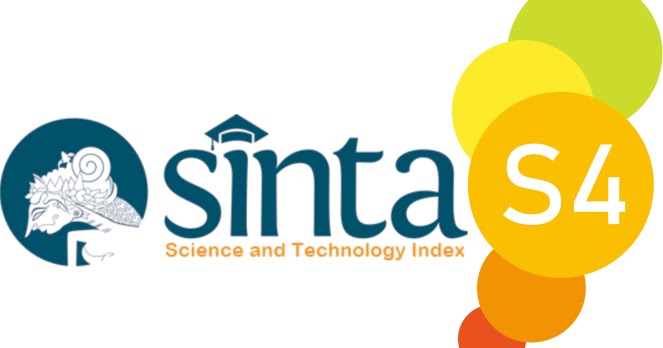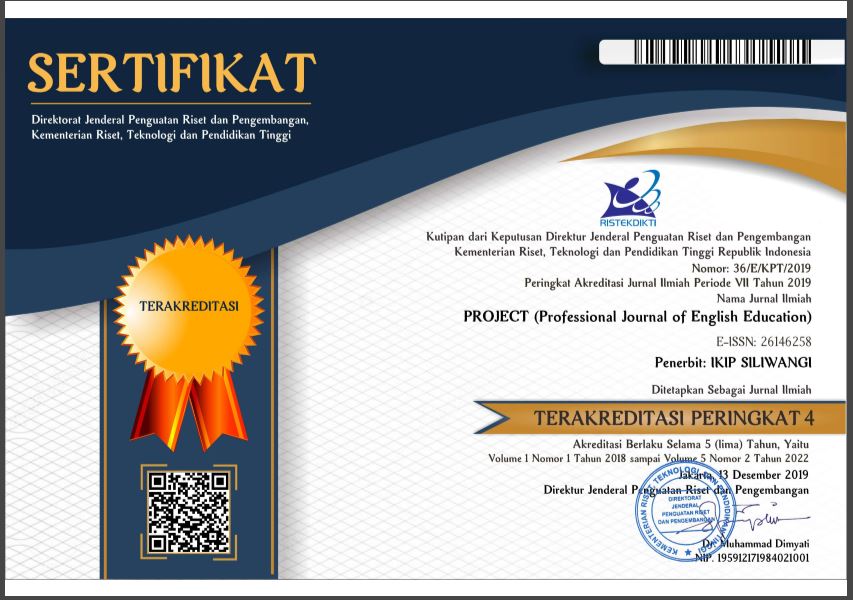Exploring EFL Students in Peer-Assisted Practice Using Online Dictionary : A Case Study in Speaking Classroom
Abstract
This qualitative research explores peer-assisted learning strategies in vocational school settings, focusing on students' challenges and perceptions in practicing English pronunciation. The study addresses the need for effective speaking skills among vocational students, considering linguistic differences and the influence of mother tongue. Through a case study approach involving multimedia majors, data was collected via classroom observations and structured interviews, analyzed thematically to reveal insights into students' use of online dictionaries and their perceptions of peer assistance. To examine the impact of peer-assisted strategies on English pronunciation skills and collaborative learning perceptions among vocational students. Utilizing qualitative case study design with multimedia students, data collected through observations and interviews highlighted reliance on online dictionaries and varied peer capabilities. Students actively use online dictionaries to enhance pronunciation and collaborative learning. Challenges include peer capabilities and individual learning preferences affecting strategy effectiveness. Peer-assisted strategies, coupled with technology, significantly improve vocational students' English pronunciation. Effective integration requires tailored support and flexible methodologies. Educators should enhance peer-support skills, design collaborative activities, and leverage technology for optimal language learning outcomes.
References
AbdAlgane, M., & Idris, S. A. M. (2020). Challenges of pronunciation to EFL learners in spoken English. Multicultural Education, 6(5), 193–202. http://repository.sustech.edu/bitstream/handle/123456789/27561/The Effects of Using ....pdf?sequence=1&isAllowed=y
Adara, R. A., & Haqiyah, A. (2021). Improving Indonesian EFL Learners’ Motivation Through Computer Assisted Learning (CALL). Journal of English Language Studies, 6(1), 110. https://doi.org/10.30870/jels.v6i1.9119
Aisyah, M., Setiawan, S., & Mustofa, A. (2023). EFL Teachers’ Perception Self-Directed Professional Development Toward Oral Language Maintenance. Loquen: English Studies Journal, 16(1), 39–54. https://doi.org/10.32678/loquen.v16i1.8402
Asenahabi, B. M. (2019). Basics of research design: A guide to selecting appropriate research design. International Journal of Contemporary Applied Researches, Vol. 6, No(June). https://www.researchgate.net/publication/342354309 _Basics_of_Research_Design_A_Guide_to_selecting_appropriate_research_design.
Bahri, S., & Sitorus, W. W. (2022). An Analysis cultural shock of education system by Indonesian students in Singapore. Jurnal Riset Rumpun Ilmu Bahasa, 1(2), 01–13. https://doi.org/10.55606/jurribah.v1i2.121
Birdwell, T., Roman, T. A., Hammersmith, L., & Jerolimov, D. (2016). Active learning classroom observation tool: A practical tool for classroom observation and instructor reflection in active learning classrooms. Journal on Centers for Teaching and Learning Introduction, 8, 28–50.
Braun, V., & Clarke, V. (2022). Thematic analysis a practical guide (A. Maher (ed.)). Sage Publications Ltd.
Ehri, L. C. (2022). What Teachers Need to Know and Do to Teach Letter–Sounds, Phonemic Awareness, Word Reading, and Phonics. Reading Teacher, 76(1), 53–61. https://doi.org/10.1002/trtr.2095
Elumalai, K. V, Abdullah, M. S., Sankar, J. P., & Kalaichelvi, R. (2021). English Language Pronunciation Barriers Encountered by the Expatriate Students at King Saud University, Riyadh. SSRN Electronic Journal, 12(1), 293–308. https://doi.org/10.2139/ssrn.3826565
Fitri, A. R., Kusrin, K., & Al-Baekani, A. K. (2023). Exploring EFL Vocational Students in Book Talk Strategy in Reading Comprehension: A Case Study. PROJECT (Professional Journal of English Education), 6(6).
Galullo, C. (2022). The Effectiveness of Peer-Tutoring in Improving Pronunciation and Fluency of Tourism Students. Studia Philologica, 41(2), 173–183. https://doi.org/10.54664/qghz5669
Ghavifekr, S. (2020). Collaborative learning: A Key to Enhance Students’ Social Interaction Skills. Malaysian Online Journal of Educational Sciences, 8(4), 9–21. http://mojes.um.edu.my/EISSN:2289-3024
Gilakjani, A. P., & Sabouri, N. B. (2016). How can efl teachers help efl learners improve their english pronunciation? Journal of Language Teaching and Research, 7(5), 967–972. https://doi.org/10.17507/jltr.0705.18
Gordon, J. (2023). Implementing explicit pronunciation instruction: The case of a nonnative English-speaking teacher. Language Teaching Research, 27(3), 718–745. https://doi.org/10.1177/1362168820941991
Huang, Y., Lee, A. H., & Ballinger, S. (2023). The characteristics and effects of peer feedback on second language pronunciation. Journal of Second Language Pronunciation, 9(1), 47–70. https://doi.org/10.1075/jslp.22034.hua
Huseinović, L. (2023). The Effects of Gamification On Student Motivation And Achievement In Learning English As A Foreign Language In Higher Education. MAP Education and Humanities, 4(1), 10–36. https://doi.org/10.53880/2744-2373.2023.4.10
Lee, W., Seong, J. J., Ozlu, B., Shim, B. S., Marakhimov, A., & Lee, S. (2021). Biosignal sensors and deep learning-based speech recognition: A review. Sensors (Switzerland), 21(4), 1–22. https://doi.org/10.3390/s21041399
Martin, I. A., & Sippel, L. (2021). Is giving better than receiving? The effects of peer and teacher feedback on L2 pronunciation skills. Journal of Second Language Pronunciation, 7(1), 62–88. https://doi.org/10.1075/jslp.20001.mar
Motallebzadeh, K., & Asa’di, E. (2013). Classroom observation and Iranian EFL teachers’skills and strategies. International Journal of Language Learning and Applied Linguistics World, 3(2), 137–149. http://www.ijllalw.org/June2013fullissue.pdf#page=138
Srakaew, P. N. (2021). The Importance of Pronunciation in English Communication. Journal of Teaching English, 2(2), 11–18.
Wang, L., Liang, L., Liu, Z., Yuan, K., Ju, J., & Bian, Y. (2021). The Developmental Process of Peer Support Networks: The Role of Friendship. Frontiers in Psychology, 12. https://doi.org/10.3389/fpsyg.2021.615148
Wentzel, K. R., Battle, A., Russell, S. L., & Looney, L. B. (2010). Social supports from teachers and peers as predictors of academic and social motivation. Contemporary Educational Psychology, 35(3), 193–202. https://doi.org/10.1016/j.cedpsych.2010.03.002
Yin, R. K. (2018). Case Study Research and Applications. In Sage Publications (Vol. 53, Issue 9).
Zhao, Y., & Lai, C. (2023). Technology and Second Language Learning: Promises and Problems. Technology-Mediated Learning Environments for Young English Learners: Connections In and Out of School, 167–205. https://doi.org/10.4324/9781003418009-8
Downloads
Published
Issue
Section
License

This work is licensed under a Creative Commons Attribution-ShareAlike 4.0 International License.




